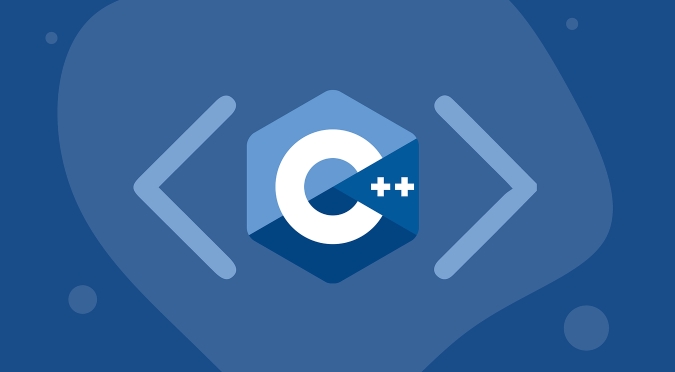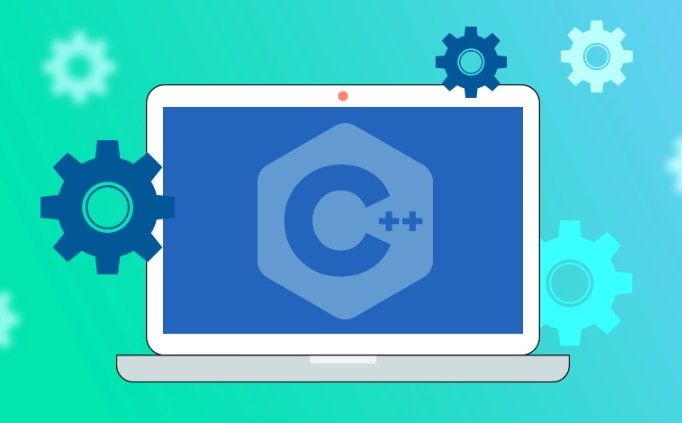CRTP realizes static polymorphism for derived class types through base class template parameters. 1. The base class uses the template parameter Derived to obtain derived class types, and uses static distribution to call derived class methods through static_cast; 2. All classes that inherit Cloneable

CRTP (Curiously Recurring Template Pattern) is a template programming technique in C. It allows a base class to "know" the type of the derived class with the derived class as a template parameter. This "singular recursive template pattern" is often used to implement static polymorphism, performance optimization (avoid virtual function overhead), and code generation.

Here is a simple CRTP example showing how to implement a common clone() function without the need for virtual functions.
? Basic CRTP example: Automatically implement clone()
#include <iostream>
#include <memory>
// Base class template, use CRTP
template <typename Derived>
class Cloneable {
public:
// Provide a clone interface to return the object of derived class type std::unique_ptr<Derived> clone() const {
return std::make_unique<Derived>(static_cast<const Derived&>(*this));
}
};
// Specific derived class MyClass: public Cloneable<MyClass> {
public:
int value;
MyClass(int v = 0) : value(v) {}
void print() const {
std::cout << "MyClass with value: " << value << std::endl;
}
};
int main() {
MyClass obj1(42);
auto obj2 = obj1.clone(); // Automatically generate clone, return unique_ptr<MyClass>
obj1.print(); // Output: MyClass with value: 42
obj2->print(); // Output: MyClass with value: 42
return 0;
}? explain
-
Cloneable<MyClass>is the base class ofMyClass. - The base class knows the specific type of the derived class through the template parameter
Derived. -
clone()function usesstatic_castto safely convert*thisinto a derived class reference and then constructs a new object. - All classes that inherit
Cloneable<T>automatically obtain the type-safeclone()function.
? Another common use: static polymorphism (avoid virtual functions)
template <typename Derived>
class Shape {
public:
void draw() const {
// Static distribution to the derived class static_cast<const Derived*>(this)->draw();
}
double area() const {
return static_cast<const Derived*>(this)->area();
}
};
class Circle : public Shape<Circle> {
public:
double radius;
Circle(double r) : radius(r) {}
void draw() const {
std::cout << "Drawing a circle with radius " << radius << std::endl;
}
double area() const {
return 3.14159 * radius * radius;
}
};
class Rectangle : public Shape<Rectangle> {
public:
double width, height;
Rectangle(double w, double h) : width(w), height(h) {}
void draw() const {
std::cout << "Drawing a rectangle " << width << "x" << height << std::endl;
}
double area() const {
return width * height;
}
};Example of usage:

int main() {
Circle c(5.0);
Rectangle r(3.0, 4.0);
c.draw(); // Output: Drawing a circle with radius 5
r.draw(); // Output: Drawing a rectangle 3x4
std::cout << "Circle area: " << c.area() << std::endl; // 78.54
std::cout << "Rectangle area: " << r.area() << std::endl; // 12
return 0;
}? Advantages
- No virtual function overhead : The call is a compilation analysis and has higher performance.
- Type safety :
dynamic_castis not required. - Code reuse : General logic is written in the base class, and derived classes only implement interfaces.
?? Notes
- The derived class must inherit
Base<derived></derived>correctly, otherwise the behavior is undefined. - Don't forget to implement the functions you expect from the base class (such as
draw()andarea()), otherwise an error will be reported during compilation. - Different derived classes cannot be managed uniformly through base class pointers like virtual functions (unless combined with other mechanisms such as
std::variantor type erasing).
Basically that's it. CRTP is a powerful idiom, commonly found in high-performance libraries (such as Eigen, Boost). Not complicated but easy to ignore.
The above is the detailed content of C CRTP example. For more information, please follow other related articles on the PHP Chinese website!

Hot AI Tools

Undress AI Tool
Undress images for free

Undresser.AI Undress
AI-powered app for creating realistic nude photos

AI Clothes Remover
Online AI tool for removing clothes from photos.

Clothoff.io
AI clothes remover

Video Face Swap
Swap faces in any video effortlessly with our completely free AI face swap tool!

Hot Article

Hot Tools

Notepad++7.3.1
Easy-to-use and free code editor

SublimeText3 Chinese version
Chinese version, very easy to use

Zend Studio 13.0.1
Powerful PHP integrated development environment

Dreamweaver CS6
Visual web development tools

SublimeText3 Mac version
God-level code editing software (SublimeText3)

Hot Topics
 Using std::chrono in C
Jul 15, 2025 am 01:30 AM
Using std::chrono in C
Jul 15, 2025 am 01:30 AM
std::chrono is used in C to process time, including obtaining the current time, measuring execution time, operation time point and duration, and formatting analysis time. 1. Use std::chrono::system_clock::now() to obtain the current time, which can be converted into a readable string, but the system clock may not be monotonous; 2. Use std::chrono::steady_clock to measure the execution time to ensure monotony, and convert it into milliseconds, seconds and other units through duration_cast; 3. Time point (time_point) and duration (duration) can be interoperable, but attention should be paid to unit compatibility and clock epoch (epoch)
 What is the volatile keyword in C ?
Jul 04, 2025 am 01:09 AM
What is the volatile keyword in C ?
Jul 04, 2025 am 01:09 AM
volatile tells the compiler that the value of the variable may change at any time, preventing the compiler from optimizing access. 1. Used for hardware registers, signal handlers, or shared variables between threads (but modern C recommends std::atomic). 2. Each access is directly read and write memory instead of cached to registers. 3. It does not provide atomicity or thread safety, and only ensures that the compiler does not optimize read and write. 4. Constantly, the two are sometimes used in combination to represent read-only but externally modifyable variables. 5. It cannot replace mutexes or atomic operations, and excessive use will affect performance.
 How to get a stack trace in C ?
Jul 07, 2025 am 01:41 AM
How to get a stack trace in C ?
Jul 07, 2025 am 01:41 AM
There are mainly the following methods to obtain stack traces in C: 1. Use backtrace and backtrace_symbols functions on Linux platform. By including obtaining the call stack and printing symbol information, the -rdynamic parameter needs to be added when compiling; 2. Use CaptureStackBackTrace function on Windows platform, and you need to link DbgHelp.lib and rely on PDB file to parse the function name; 3. Use third-party libraries such as GoogleBreakpad or Boost.Stacktrace to cross-platform and simplify stack capture operations; 4. In exception handling, combine the above methods to automatically output stack information in catch blocks
 What is a POD (Plain Old Data) type in C ?
Jul 12, 2025 am 02:15 AM
What is a POD (Plain Old Data) type in C ?
Jul 12, 2025 am 02:15 AM
In C, the POD (PlainOldData) type refers to a type with a simple structure and compatible with C language data processing. It needs to meet two conditions: it has ordinary copy semantics, which can be copied by memcpy; it has a standard layout and the memory structure is predictable. Specific requirements include: all non-static members are public, no user-defined constructors or destructors, no virtual functions or base classes, and all non-static members themselves are PODs. For example structPoint{intx;inty;} is POD. Its uses include binary I/O, C interoperability, performance optimization, etc. You can check whether the type is POD through std::is_pod, but it is recommended to use std::is_trivia after C 11.
 How to call Python from C ?
Jul 08, 2025 am 12:40 AM
How to call Python from C ?
Jul 08, 2025 am 12:40 AM
To call Python code in C, you must first initialize the interpreter, and then you can achieve interaction by executing strings, files, or calling specific functions. 1. Initialize the interpreter with Py_Initialize() and close it with Py_Finalize(); 2. Execute string code or PyRun_SimpleFile with PyRun_SimpleFile; 3. Import modules through PyImport_ImportModule, get the function through PyObject_GetAttrString, construct parameters of Py_BuildValue, call the function and process return
 What is function hiding in C ?
Jul 05, 2025 am 01:44 AM
What is function hiding in C ?
Jul 05, 2025 am 01:44 AM
FunctionhidinginC occurswhenaderivedclassdefinesafunctionwiththesamenameasabaseclassfunction,makingthebaseversioninaccessiblethroughthederivedclass.Thishappenswhenthebasefunctionisn’tvirtualorsignaturesdon’tmatchforoverriding,andnousingdeclarationis
 What is a null pointer in C ?
Jul 09, 2025 am 02:38 AM
What is a null pointer in C ?
Jul 09, 2025 am 02:38 AM
AnullpointerinC isaspecialvalueindicatingthatapointerdoesnotpointtoanyvalidmemorylocation,anditisusedtosafelymanageandcheckpointersbeforedereferencing.1.BeforeC 11,0orNULLwasused,butnownullptrispreferredforclarityandtypesafety.2.Usingnullpointershe
 How to pass a function as a parameter in C ?
Jul 12, 2025 am 01:34 AM
How to pass a function as a parameter in C ?
Jul 12, 2025 am 01:34 AM
In C, there are three main ways to pass functions as parameters: using function pointers, std::function and Lambda expressions, and template generics. 1. Function pointers are the most basic method, suitable for simple scenarios or C interface compatible, but poor readability; 2. Std::function combined with Lambda expressions is a recommended method in modern C, supporting a variety of callable objects and being type-safe; 3. Template generic methods are the most flexible, suitable for library code or general logic, but may increase the compilation time and code volume. Lambdas that capture the context must be passed through std::function or template and cannot be converted directly into function pointers.






